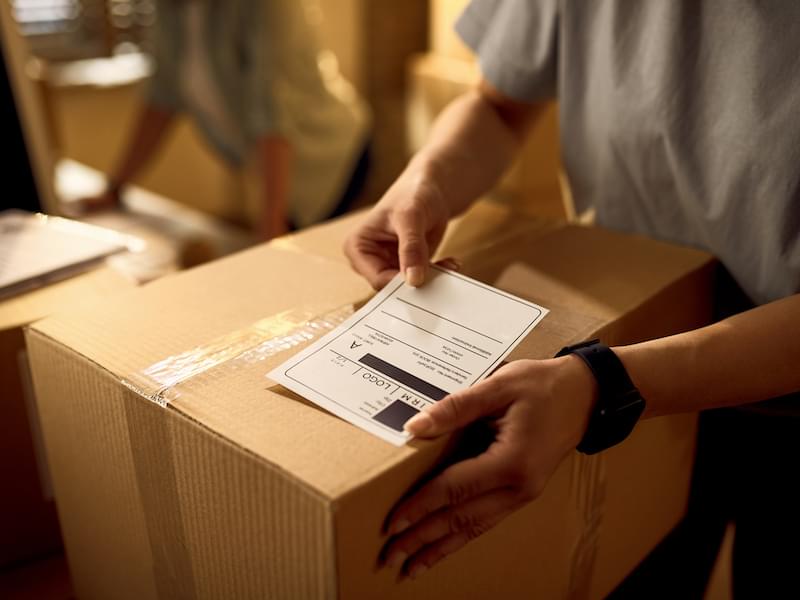Corrugated boxes, durable papers and recycled plastics all have potential as the e-commerce segment continues to seek out more sustainable packaging. This is stimulating design and material innovation across the industry, as packaging companies look to secure new business in a rapidly expanding, often lucrative, market segment.
Expert data forecasting from the latest Smithers study –
The Future of Sustainable E-commerce Packaging to 2028 – shows that in 2023, the segment will be worth a projected $32.09 billion worldwide.
Just as e-commerce continues to outstrip packaging sales in conventional retail, demand for greener, home-recyclable options are iteratively displacing less sustainable formats from packaging inventories. Total demand for sustainable e-commerce packing will reach $48.75 billion in 2028, according to Smithers market modelling, increasing its share from 64% to 67%.
The heavy reliance on corrugated grades means e-commerce is well positioned to appeal to consumer and brand owner calls for more sustainable packaging. Corrugated board is 73.4% of the contemporary e-commerce market by value. It has strong sustainability credentials, 76.5% of e-commerce board is made with recycled pulp, and the vast majority of formats are suitable for curbside collection.
Innovation is now including more box types that incorporate their own internal protective elements, lessening use of dunnage or other secondary protective elements. Better microflute grades are simultaneously allowing shippers to reduce the size and weight of their packs.
While corrugated will remain the most popular solution for online dispatch, lucrative opportunities are arising in segments such as apparel where polyethylene bags or padded mailers are the preferred format. Innovations are now allowing paper companies to offer premium, more sustainable alternatives; including tough, water-resistant kraft shipper bags and all fiber-based mailers. For more fragile goods, an array of protective elements made from fiber or pulp are further alleviating e-commerce impact on the environment.
The desire for sustainability in design must be balanced against other considerations in e-commerce distribution. These include product protection, the need for returnable packaging designs; compliance to voluntary codes, such as Amazon’s ship-in-own-container (SIOC) program; compatibility with fit-to-product machinery; clear branding, especially for online subscription services; and the emerging demand for omni-channel formats.
Where packaging designers can mutually accommodate these factors, a significant sales premium can be realized.
Smithers detailed examination reveals that with a projected value of $14.58 billion in 2023, apparel (clothing, shoes, and accessories) is already the largest segment of the e-commerce packaging market. It will also be the fastest growing through to 2028, as well; creating a forum where a new generation of paper packs will compete with PE shippers made from recycled plastic.
Demand is continuing to increase for e-commerce food and beverage packaging, after the sector received an unexpected boost from Covid-19. Value has more than quadrupled since 2018, to reach $2.30 billion in 2023. There is now an imperative for more sustainable fiber-based designs, including formats that can thermally insulated chilled or frozen home deliveries.
Historic, current, and future demand (by volume and value) for all e-commerce packaging is available to purchase now in
The Future of Sustainable E-commerce Packaging to 2028 – from Smithers. All market drivers are examined in detail, and the sustainability credentials of existing and new e-commerce formats quantified.
The exclusive Smithers dataset (+250 tables, figures, and illustrations) segments the market comprehensively, by
- E-commerce packaging/material format – Corrugated (B-flute, C-flute, Microflute), Flexibles plastics, Protective mailers, Secondary protective elements
- Raw material origin – Virgin, Recycled
- End-use application – Food & beverages; Apparel; Personal care & cosmetics, Books & media, Toys & sports equipment, Home & garden furniture, Electrical goods
- Regional/national market – North America, US, Canada, Mexico; South & Central America, Brazil, Other South & Central America; Western Europe, France, Germany, Italy, Spain, UK, Other Western Europe; Eastern Europe, Poland, Russia, Other Eastern Europe; Asia-Pacific, China, Japan, South Korea, Other Asia-Pacific; Middle East & Africa.
